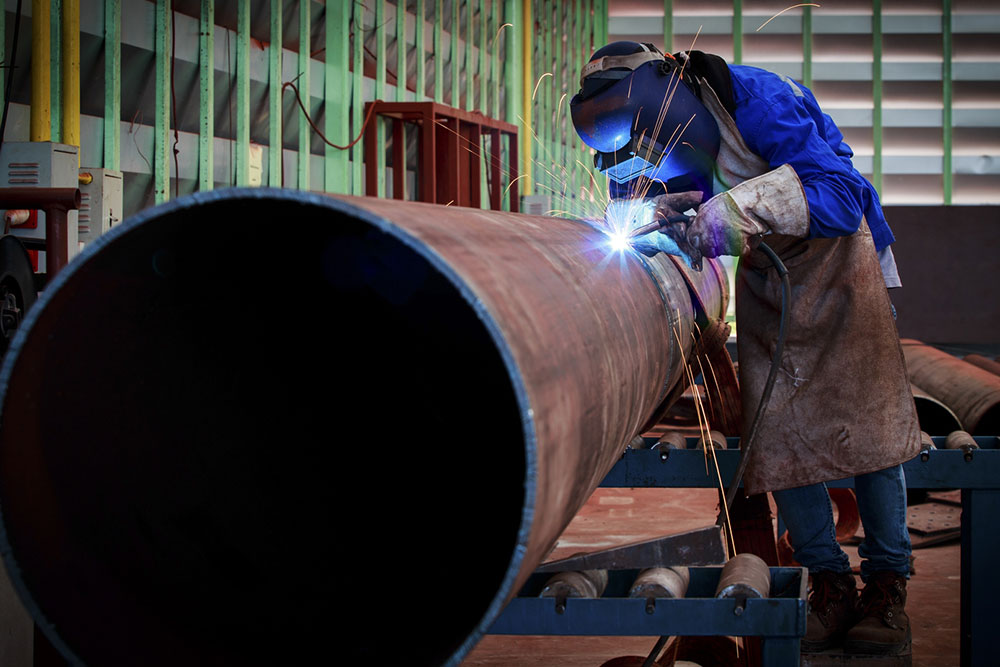Common Pipe Welding Techniques and Tips to Choose a Service
Industrial pipe welding helps combine two or more metal pipes to form a single, seamless connection. This process is used to construct oil and gas pipelines, install home plumbing and HVAC systems, and for several other purposes in different industries nationwide. The quality of pipe welding services is important because it directly impacts the success of projects. Superior quality welding makes the structure strong and resilient, ensuring long life and safety.

Common pipe welding techniques
Contractors use different techniques to weld pipes, depending on their material.
1. TIG welding
The Tungsten Inert Gas or TIG pipe welding technique is one of the most popular ones offered by several welding services. Its popularity is mostly attributed to its high precision, which produces quality welds. The TIG method uses non-consumable tungsten electrodes to heat the edges of metal pipes. These melted edges are then joined using a filler metal. TIG welding is typically used to join stainless aluminum pipes, steel pipes, and pipes made of non-ferrous metals.
2. MIG welding
Another common technique is MIG or Metal Inert Gas welding. Here, a consumable wire electrode heats the metal pipes that need to be joined. Like the TIG method, a filler metal is then used between the pipe’s melted edges for a stronger bond. But, the MIG technique is much quicker and can be used for both ferrous and non-ferrous metals. That said, it does not produce the same weld quality as the TIG method.
3. Stick welding
Also known as Shielded Metal Arc Welding (SMAW), the stick welding method uses consumable electrodes coated with flux. This coating heats the edges of the metal pipes that need to be combined together. The advantage of flux is that it forms a protective shield around the weld, preventing any contamination from entering the area between the joints. This method is generally used to connect carbon steel pipes.
4. Flux-Cored Arc Welding
This technique is quite similar to the MIG and stick processes. The only key difference is that Flux-Cored Arc Welding, or FCAW, uses a special kind of wire with a flux filling to create a shield and prevent contamination during welding. The FCAW process is typically useful for welding thicker metal pipes and is known to be quicker than stick welding.
5. Submerged Arc Welding
This industrial pipe welding technique uses granular flux to form a protective layer around the weld between the two pipes. During the welding process, the flux is continuously fed to the weld. Since the weld gets hidden beneath all the flux, no impurities can enter. Submerged Arc Welding, or SAW, is mainly used for thicker metal pipes that require consistent and high-quality welds.
Tips to choose the right pipe welding services
Since welding pipes is a crucial process that can make or break a project, one must hire an experienced service provider with the necessary expertise, follow all safety protocols, and ensure high precision. The right tips can help businesses pick a suitable pipe welding contractor for their needs.
1. Research several professional pipe welding service providers
One must shortlist multiple pipe welding services instead of hiring the first option available. Doing so will allow the business to compare the services, prices, expertise, and experience and choose the most suitable company. While researching, individuals should read testimonials and reviews from previous clients to understand the contractor’s work quality and standards and make an informed decision.
2. Check the provider’s expertise and experience
A crucial factor to consider when looking for a pipe welding service is its expertise and experience. One should ensure the provider has technicians with specific knowledge and skills in pipe welding who are well-trained and certified. Ensuring the provider has a proven record or a high success rate is also important. The company should have been in the business for several years and have a good reputation in the market.
3. Verify the quality of work
It is important to ensure the welding is done so that the welded pipes are strong and can withstand extreme weather and environmental conditions. A proven way to verify whether a particular company provides quality services is to speak to clients who have previously worked with it. The best providers use durable equipment and materials and usually offer a guarantee for their services. They also follow a standard quality control process that helps them avoid errors and produce excellent results.
4. Check whether safety standards are in place
Both a pipe welding service provider and the business hiring them must consider safety a top priority. Since the welding process involves using excessive heat and complex tools, it can quickly become hazardous if the appropriate safety protocols are not followed. The service provider must follow high safety standards, have an appropriate safety management system, and ensure all its professionals follow mandatory regulations.